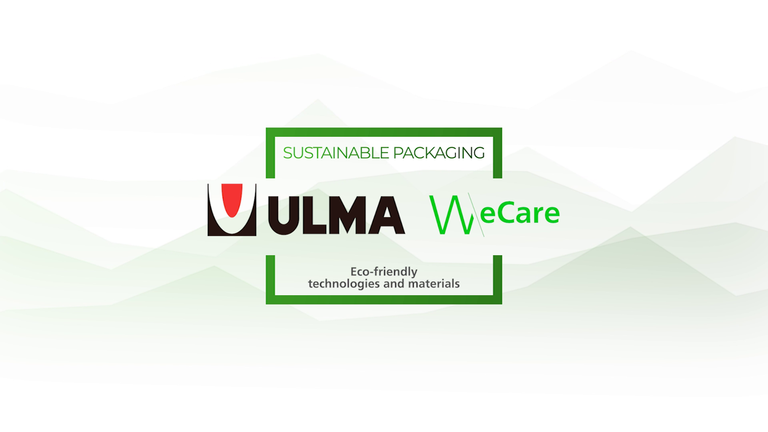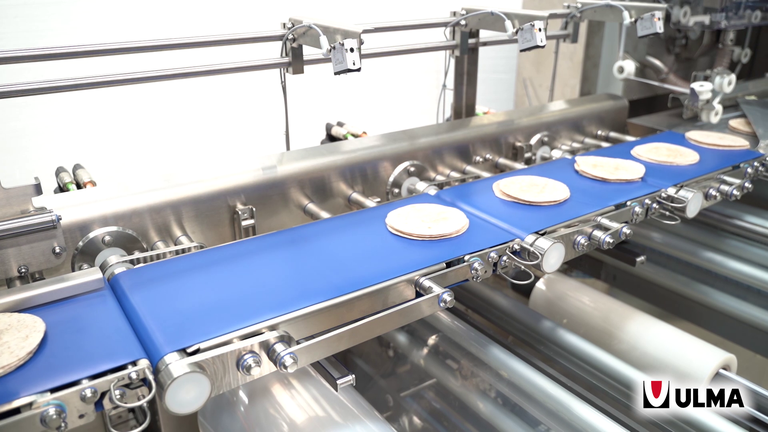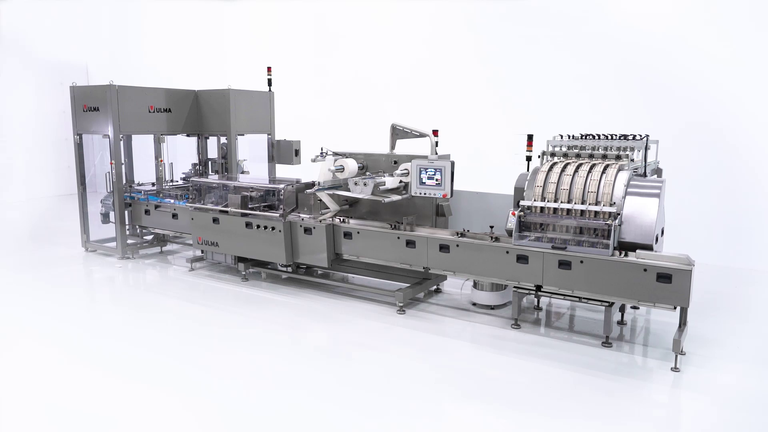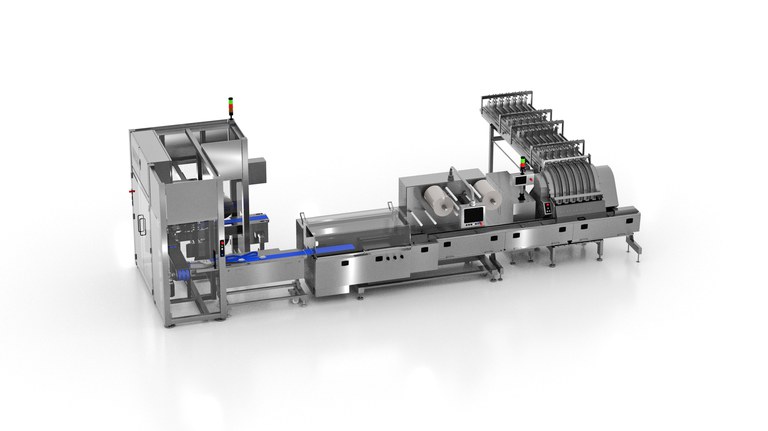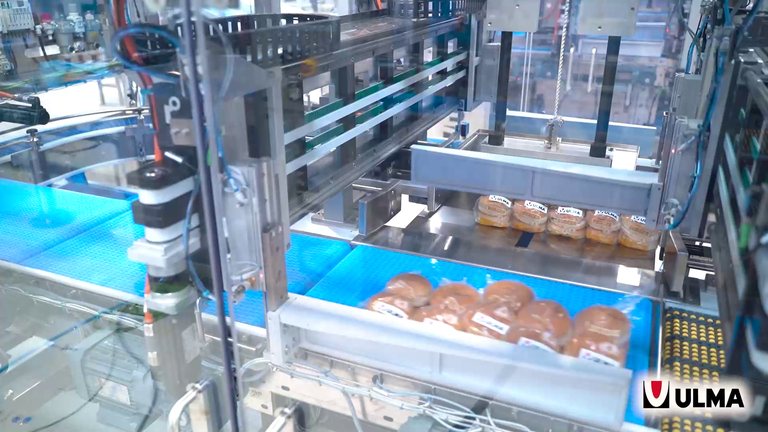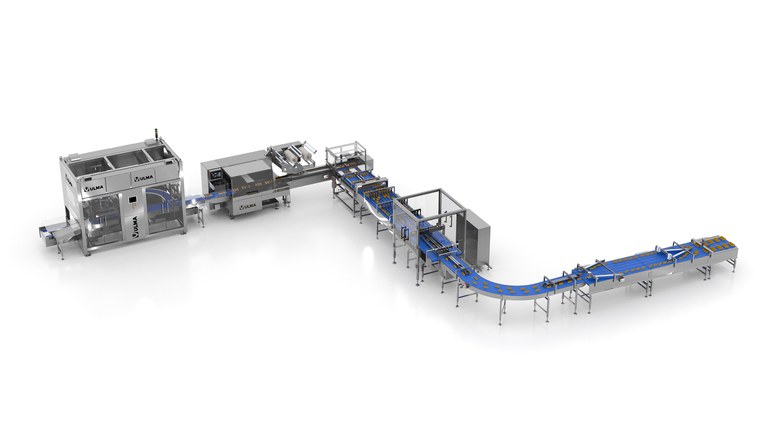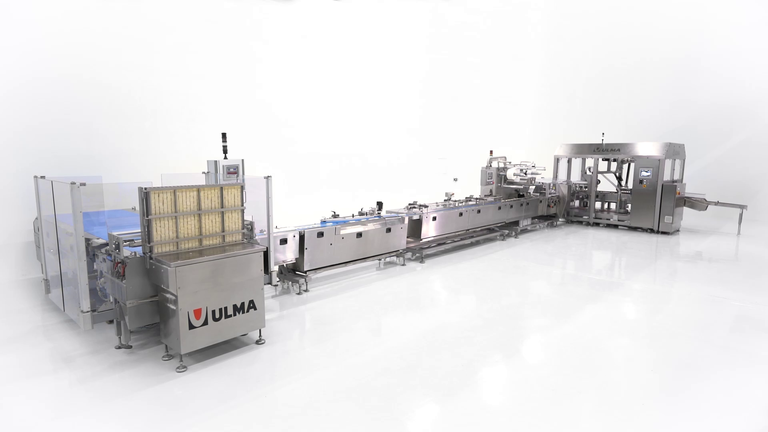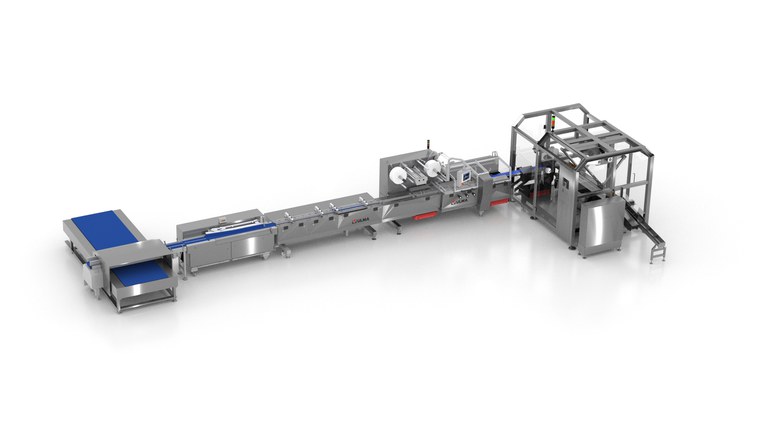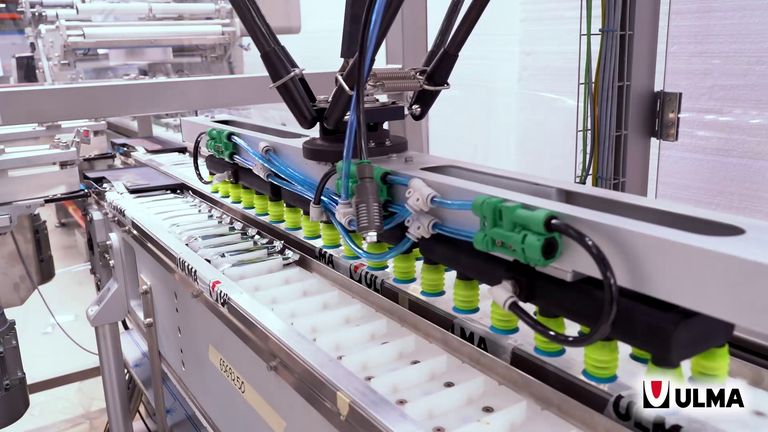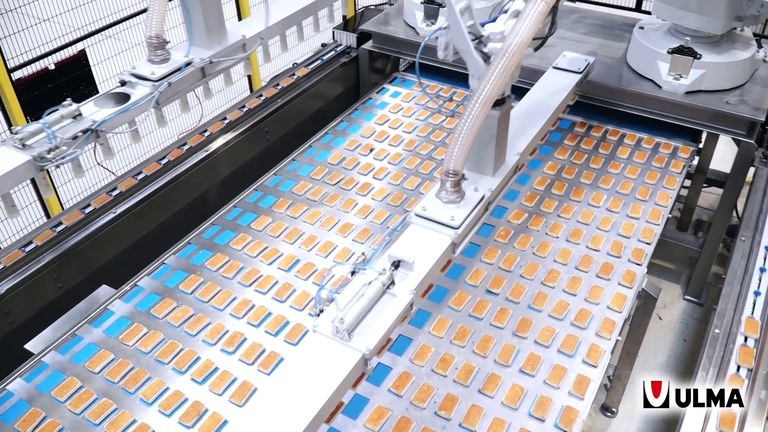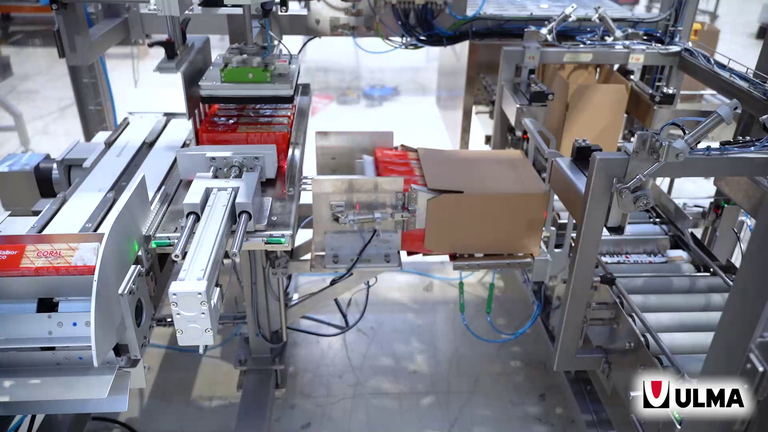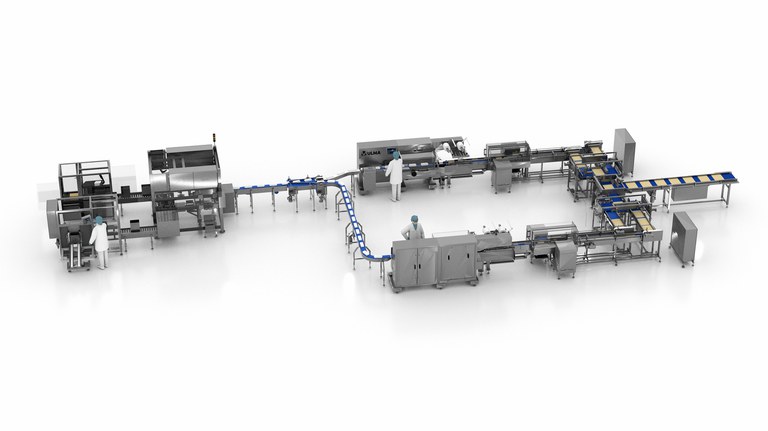Virtual showroom - Bakery, biscuits and confectionery
Packaging solutions for bakery, biscuits and confectionery
Digital - Digitalisation, Connectivity, 4.0
At ULMA Digital, we are committed to helping to improve our customers' productivity and therefore our packaging machines are connectable and capable of receiving, processing and sending information, so that they can be networked in an Industry 4.0 environment of a smart factory.
Intuitive HMI
Our equipment has a simple and intuitive, configurable HMI (Human Machine Interface) with aids for machine and production adjustment, data control and production parameters and customisable instructions on different media (step by step, PDF and video).

Connectivity
Our machines can be connected to other manufacturers' equipment, as well as to the customer's MES and ERP systems and even, if the customer requires, to external systems, thus facilitating batch control, recipe changes and traceability.
For this, we have different communication mechanisms and protocols, such as ModbusTCP and OPC UA, or MQTT in case of cloud connections.

Efficiency
Continuous information on the status of the machine, measurement and OEE visualisation (efficiency) of the machine or installation, with analysis of faults by causes, based on manufacturing orders, shifts or time periods through graphical or numerical reports, error history, etc.
Likewise, through the myULMA customer portal, the status of the machine and its efficiency can be monitored from any device, both instantaneously and for a specific period from the last 12 months.
Measurement of energy, water, air/gas and film consumption.
We carry out monitoring and control projects for complete facilities via Scada and their integration with manufacturing systems, including process automation using conventional and collaborative robotics.

Security and traceability
Our equipment has user identification and registration with an access system restricted by security levels to authorised personnel, including validation through RFID or integration with the company's Active Directory, and with data acquisition and recording systems in compliance with data integrity regulations.
Option of integrating traceability control systems at different levels of the product distribution chain depending on the customer's requirements.
Optional inclusion of an artificial vision system with detection of product quality and elimination of defective products, quality of packaging sealing and other options such as label identification, reading and registration of codes, etc.

Cybersecurity
Our equipment is designed to be secure and is prepared to prevent cyberattacks. Internal systems are protected by network segmentation devices and encrypted communications are available.
Our machines also include the option of access using SSL encrypted VPN technology, which guarantees security in communications for remote assistance or updates.

Maintenance support
Instructions and customised maintenance programs available in the machine control itself. The myULMA customer portal also has a history of tasks performed, the ability to generate offers and orders, as well as real-time monitoring of order status.
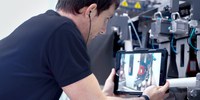
ULMA Remote Services
ULMA Packaging makes ULMA Remote Services available to its customers, which is the set of services and tools designed by ULMA Packaging to provide remote support with optimal efficiency and security. The most important of these services are FAT online, Remote access to the equipment, Remote support through AR, Online SATs and Commissioning, and Remote training.
Service - Taking care of the important things
Taking care of the important things.
Our priority is to ensure that our customers achieve optimal operability and productivity. We know how important it is to ensure that our equipment operates with maximum efficiency, to bring added value to your business. So one of the cornerstones of our strategy is our commitment to provide a high-quality, friendly and effective service to our customers. We act as an extension of our customers' own teams and we excel due to:
Our proximity: The best help is the closest one
We take on our customers' challenges and we have in-depth knowledge of their systems and production capacities. Therefore, we are committed to always offering a direct service. Our customers always have a way of immediately contacting their nearest technical service centre. They have the peace of mind of knowing that, whenever they need it, they will have direct access to a local expert who has all of the information about their systems.
Speed: always at your side
Our in-house service network is deployed in 24 countries. Through our network of distributors, we are able to ensure that there is a technical service centre near to every single one of our customers; as we have extended it to over 50 countries, we can act and respond quickly and expertly.
Effectiveness: Accurate answers to the most demanding challenges
We have experts who specialise in each product line for international operations and an Expert Technical Committee, formed by highly qualified professionals who will give you advice to ensure the effectiveness of all procedures.
WeCare - Sustainable packaging
#ULMAweCare is an ambitious sustainability plan that aims to achieve a circular economy across the board.
#ULMAweCare covers several research and development areas, pursuing innovation in sustainable designs and applications throughout our packaging machine range. ULMA Packaging Technological Center has a team of over 50 engineers working on a range of technologies and applications to improve sustainability through innovation.
Our challenge: "To reduce the impact of the linear economy culture by mitigating the overall impact of plastic packaging, maintaining preservation properties and avoiding food waste at all times".
Tortillas - Reclosable packaging for tortillas
Artic side seal horizontal flow pack wrapper for tortilla packaging. The wrapper performs primary packaging with a resealable zipper system.
Primary packaging
The product stacks are lined up when they reach the packer. The multi-conveyor packer positions the product in the film, in the forming tube.
The film below the products uses a conveyor to carry the products to the jaws and the longitudinal sealing station.
The zipper is fed to a punching station via a roller system, where it is cut down to the width of the jaws.
The zipper is sealed lengthwise to the film in the longitudinal sealing station.
The cross sealing station seals and cuts the pack.
Biscuits - Primary and multipack sustainable packaging
This packaging line has been designed for totally sustainable packaging. The primary packaging and the multipack are made exclusively with 100% recyclable paper.
In addition, the multipack is made with two adhesive paper labels that replace the usual secondary packaging, reducing the amount of packaging material used.
Biscuit pile loader
The pile loader receives the biscuits already stacked from the process, in 6 channels. In this case, piles of 4 biscuits are formed, although the system’s flexibility makes it easy to program it for piles of up to 10 biscuits.
The piles are transferred precisely and carefully to the infeed conveyor of the FR 400 wrapper, synchronizing the speed.
Horizontal FR 400 flow wrapper
The HMI control of the wrapper allows you to intuitively manage all of the production parameters and allowing to be controlled remotely.
A sensor checks the piles that are fed to the Flow Pack, rejecting them if they do not meet the product parameters defined as valid.
The FR 400 model allows production of up to 70 linear metres of film per minute.
The biscuits are handled carefully to minimise damage throughout the process.
The packaging is a fully recyclable film made of 100% paper.
Multipack labeller
After completing the primary packaging, the empty or wrong packages are rejected from the production line.
The packages are stood up before being transferred to the race track, where they are grouped in 5 units. These units are joined by applying two adhesive labels, also made of paper, one on each side of the group, forming the sustainable multipack.
The labels have been designed with pre-cuts to make it easier to separate the packages and consume them individually.
Soft bread & buns - Automated packaging and case packing
Primary packaging
The product is fed from the spiral cooler. Using a chicane system, the product is aligned to form two lines of products. A double multiplier distributes the product to the grouping module's various channels.
The bundle of products is transferred to the machine's feeder conveyor, which transports the product to the Artic horizontal wrapper.
The wrapper is equipped to work with MAP, with aroma dispensing.
Case packing cell
Hot dog bag packing cells are devices that have a servo-driven handler to obtain the required stacking pattern and pack the products in the boxes. They are flexible and configurable systems with intuitive operation. Operators can change existing patterns or programme multiple new box patterns, with the ability to view the configuration on the HMI. It is also a single-block cell, which reduces the unit's start-up times and, depending on the required output speed, there can be a single or double handler to achieve the most demanding output speeds.
Snack bars - Automated packaging and case packing
There are three different main components to this line for bars:
- Bar row distributor
- FR 500 horizontal flow pack wrapper using material that is 100% paper
- Automatic top loader boxing cell
Row distributor
A product distributor that ensures an efficient, continuous flow towards the horizontal wrapper.
In a typical configuration for this type of line, the row distributor can be composed of several modules.
To improve its OEE, the line has a buffer conveyor, where the rows are collected when there is an unscheduled system stoppage. Increasing the speed of each branch when the machine error is resolved and operation is resumed, the system distributes the rows that have accumulated in the buffer by combining them with the incoming flow without having to stop the upstream process.
The design of our line's distributor and primary packaging branch allows each component to be removed to facilitate cleaning and maintenance operations. Each component has been designed to enable their assembly when cleaning operations have been completed, thus preventing any errors during this process.
FR 500 horizontal wrapper
After transferring the product to the primary packaging branch, the products are repositioned to place them end-to-end. Quality control is performed in this position and any products that are out of tolerance are rejected before they reach the multi-conveyor feeder.
Depending on the application, the multi-conveyor feeder is configured to operate with or without contact between products.
When the product is fed into the FR500 horizontal wrapper, which can reach up to 1000 packages/minute, the product is packaged at high speed using material that is 100% paper, thanks to the special design of the film former.
Bar top loader cell
The bar top loader cell is a device that inserts groups of bars into cardboard cartons. Bars and automatically-formed cardboard cartons are fed to the cell, which uses a delta robot to collect and load them. The robot loads groups of bars into several cartons simultaneously and, when they are full, it sends them to the automatic carton sealing machine.
This is a high-speed, compact and single-block loading cell. This means that the system takes less time to start up and it occupies minimal space in the customer's facilities.
Snack bars - Automated complete line for primary, multipack and case packing
There are four different main components to this line for bars:
- Bar row distributor and primary packaging system
- Automatic loading cell for multipacks
- Multipack packaging system
- Automatic cardboard box packing cell
Primary packaging
The product is arranged in rows when it arrives from the cold tunnel. An RDS transfers the rows of products to the primary packaging branch.
The primary packaging system consists of an alignment module, an indexer and an FR500 horizontal wrapping machine.
At the machine's outlet, a divider splits the one line of products into two, to facilitate secondary packaging loading.
Multipack wrapper loading cell
The multipack wrapper's loading cell is the system that receives the bars from the single packaging wrapping machine, groups them together and loads them into the conveyor of the multipack packaging wrapping machine.
It is a compact unit composed of a delta robot which is fully integrated with the operation of the single packaging wrapper and the multipack wrapping machine. This is essential for ensuring the successful operation of this type of high-speed solution.
Multipack packaging
A delta robot delta feeds the Atlanta HT horizontal wrapper which completes the secondary packaging.
Cardboard box packing cell
The packing cell receives automatically formed boxes and multipack bar packages and collects and packs them inside the boxes. It is composed of an automatic box forming machine, a packing cell with a delta robot and an automatic box sealing machine.
In addition to the delta robot, the packing cell has a stacking table that allows the contents of the box to be prepared so that it can be packed in the most efficient way possible with a single robot motion. Packing can be configured on the operator's screen, offering customers a high degree of independence that allows them to programme future products for themselves.
Baked goods - Automated line for primary and multipack packaging
There are four different main components to this full line for commercially baked goods:
- Flow pack wrapper automatic product loading cell
- Flow pack primary packaging system
- Automatic loading cell for multipacks
- Flow pack multipack packaging system
Single flow pack loading cell
The single flow pack loading cell is composed of two anthropomorphic robots which collect the product from the customer's oven and load it onto the flow pack conveyor.
The robots each have their own section of the customer's oven and they are synchronised with it to perform phased unloading. After the products have been collected, they are each loaded it into their respective flow pack wrappers. The robots are also synchronised with the wrappers to ensure that loading is performed correctly between paddles, without damaging the fresh product.
Primary packaging
The product is fed to two Atlanta HT horizontal wrapping machines by two robots. A special interface facilitates the loading of the product onto the machine's belt.
Multipack flow pack loading cell
The multipack flow pack loading cell is composed of two product grouping anthropomorphic robots and one flow pack conveyor loading anthropomorphic robot.
The packaged products are received from two single flow pack wrappers and there is a robot at each of their outlets that puts them into groups. Each robot gathers these groups onto a paddle conveyor until it has a specific number of groups. When that number is reached, the loading robot collects all of the groups at once and loads them onto the multipack flow pack wrapper.
The operation of all components of this cell is integrated with the single flow pack wrappers so that all of the systems work as one, ensuring the simple and intuitive operation of the whole line.
Multipack packaging
An Atlanta HT horizontal machine is fed the product by a robot. To facilitate the loading of the product, the machine works intermittently.
Wafers - Full line for automated packaging and case packing
Full line for the primary packaging of wafers and automatic 2-in-1 packing (top loading and side loading).
Primary packaging
The system is fed the processed blocks of wafers. The system can distribute the product to one or two machines, depending on the packaging format. Furthermore, in the event of a machine shutdown, it is equipped to divert the product to the machine that is not in operation.
A servo-controlled pusher system is used to perform the transfer.
The product is collected on one side of the primary packaging machine, where a transfer system introduces the product onto the Atlanta HT horizontal wrapper's conveyor belt.
2-in-1 packing cell
This packing cell makes it possible to perform TOP LOAD and SIDE LOAD packing in a single cell. It has a delta robot and two packing stations for this purpose. One of the two packing stations will be used, depending on the packing method.
The cell collects the products from two wrappers, groups them together and then packs them into a cardboard box. TOP LOAD packing is performed directly in the box, while during SIDE LOADING, the box is prepared beforehand and then loaded.
It is a single-block, compact and flexible cell for solutions that require both types of packing.




